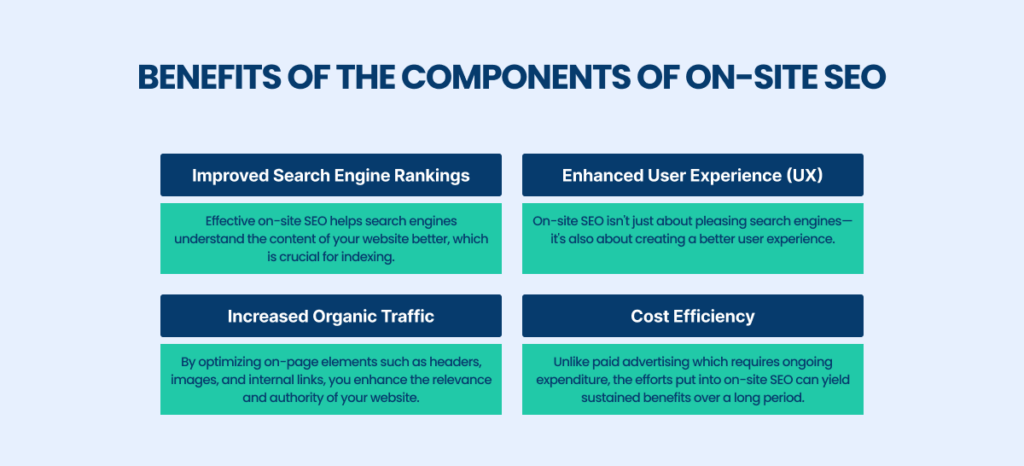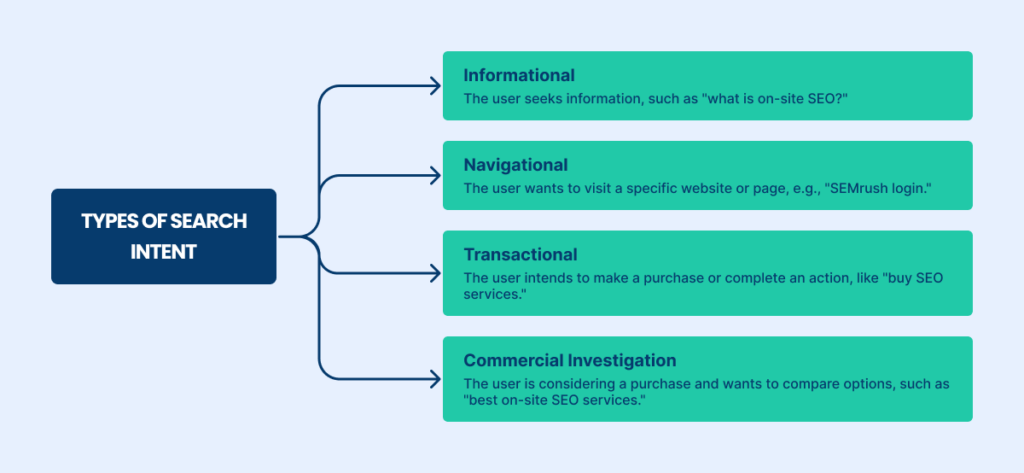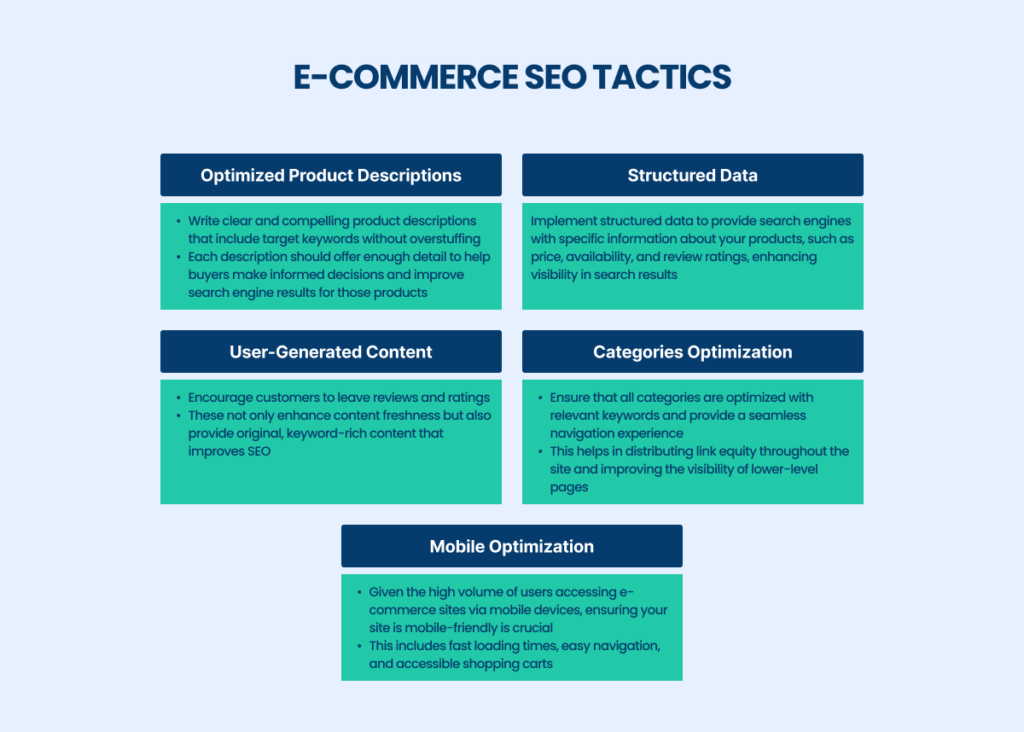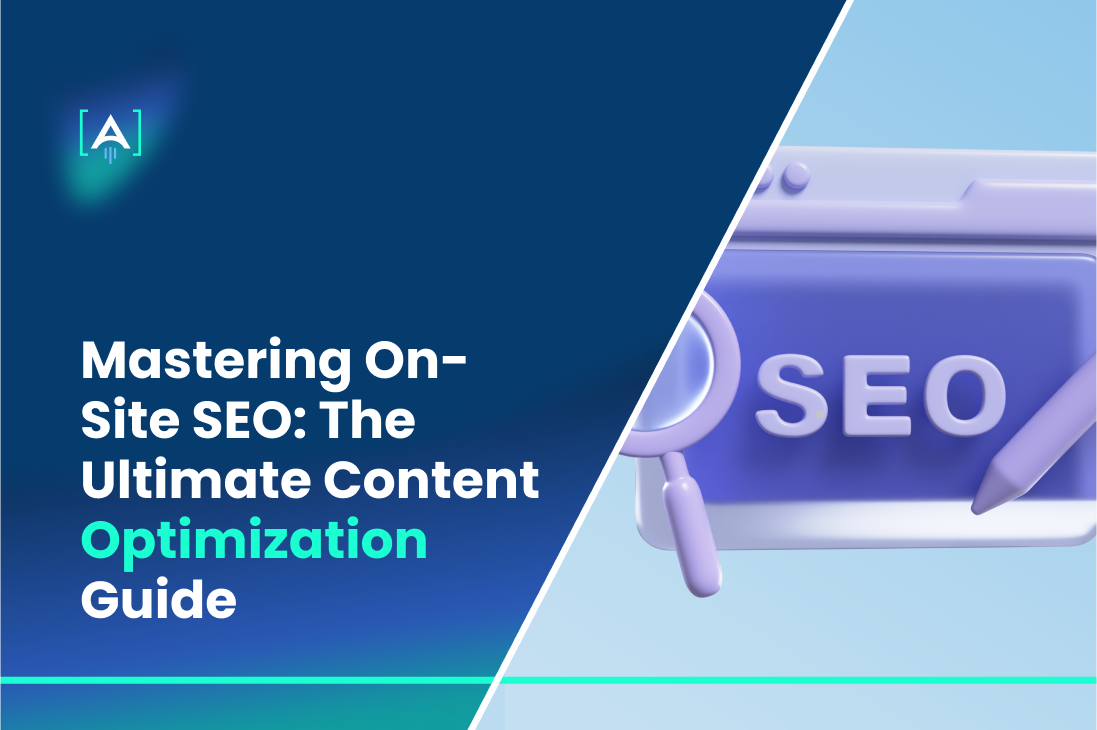Did you know that even the most brilliant content can get lost in the online landscape?
It’s a harsh reality: if your content isn’t optimized, it might as well be invisible. But fear not!
Here’s where the magic of content optimization comes in.
Source: Market Insider Group
An SEO agency can significantly enhance the quality of content creation by balancing writing for search engines and writing for people.
Moreover, in his essay “Content is the King,” Bill Gates states, “Content is where I expect much of the real money will be made on the Internet, just as it was in broadcasting.” Years later, the prediction about content’s power on the internet rings truer than ever.
The blog post will highlight how to master On-Site SEO and optimize content to be as productive as possible.
What is On-Site SEO? Definition and Significance
On-site SEO, also known as on-page SEO, concerns to the practice of optimizing elements on a website to contribute search engine rankings and attract more relevant traffic.
Unlike off-page SEO, which involves external signals like backlinks, on-site SEO focuses on enhancing the content and structure of your website.
Source: Brightedge Research
The significance of on-site SEO lies in its ability to make your site both user-friendly and easy for search engine crawlers to understand, thus improving your visibility in search results. Additionally, On-page SEO vs. off-page SEO distinguishes between strategies that optimize elements directly on your website.
Effective on-site SEO helps search engines interpret the page content and clearly indicates if the content is relevant to the searcher’s query. With Google’s algorithms increasingly focusing on user experience and relevancy, mastering on-site SEO is crucial for any successful SEO strategy.
Core Components of On-Site SEO
On-site SEO has several core components, each essential for enhancing site visibility and user engagement.

Content Elements
Content is a pivotal component of on-site SEO, as it’s the primary resource users come for. It includes everything from the text on the page to the images, videos, and even the links you provide.
Source: Content Marketing Institute
Keyword research is fundamental here; by identifying and using keywords that your audience is searching for—like those from ‘keyword research SEO‘ and ‘competitor keyword research‘—you can connect to your content to meet their needs and questions.
Additionally, avoiding SEO keyword cannibalization ensures you’re not competing against your pages in search results, which can dilute your visibility.
Quality content should be engaging, useful, and informative. It must provide value that goes beyond what’s available on other sites, especially those within your competitive set.
Moreover, the use of targeted keywords should feel natural and not disrupt the readability of the content, maintaining a delicate balance that both Google and readers will appreciate.
HTML Elements
HTML elements include title tags, meta descriptions, header tags, and structured data, all of which play critical roles in on-site SEO.
Source: Hubspot
Title tags and meta descriptions are crucial because search engines often use them in the snippets in search results. These elements should include main keywords such as ‘on-site SEO’ or ‘SEO strategy’ and be crafted to capture the searcher’s attention, thereby improving click-through rates.
Header tags (H1, H2, H3, etc.) help organize the content clearly on your pages, making it convenient for readers to navigate and for search engines to understand the structure and emphasis of your content.
Structured data markup is another HTML element that can significantly impact SEO by helping search engines understand the context of your content, thereby enabling rich snippets that can enhance visibility in search results.
Site Architecture Elements
The structure of a site plays a critical role in its SEO performance. A well-organized website helps users and search engine crawlers easily find what they want, enhancing the overall user experience.
This includes a logical hierarchy in site navigation and URL structure, which should be intuitive and reflect the content’s organization. For instance, ensuring URLs contain relevant keywords (like ‘on-page SEO’ or ‘search engine rankings’) can help users and search engines comprehend the page content at a glance.
Ensuring your website is mobile-friendly is also a part of site architecture that can’t be overlooked as mobile searches continue to rise.
Search engines favor websites that suggest a strong mobile experience, often boosting their rankings in mobile search results. Furthermore, site speed is a significant factor; slow-loading sites can harm your search engine rankings and user experience, potentially increasing bounce rates.
Keyword Research for Content Optimization
Effective keyword research is foundational for any successful SEO strategy, particularly for enhancing on-site SEO. By understanding and implementing strategic keywords, businesses can significantly improve their visibility and engagement on search engines.
This section explores tools and approaches for conducting keyword research, understanding keyword intent, and the differences between long-tail and short-tail keywords, which are pivotal for mastering on-page SEO.
Tools and Techniques for Effective Keyword Research
Various tools are available to aid in keyword research, each with unique features that can help refine your SEO strategy.
- Google Keyword Planner: Ideal for beginners and experts alike, this tool is integrated with Google Ads and provides insights into keyword search volumes, competition levels, and potential cost-per-click (CPC). It’s useful for optimizing their on-site SEO for Google’s search engine results.
- Ahrefs: A more advanced tool that provides detailed keyword data, including keyword difficulty, search volume, and the SERP features that appear with each keyword. Ahrefs is also excellent for competitor keyword research, allowing you to see which keywords your competitors rank for and how you might adjust your strategy accordingly.
- SEMrush: This tool suggests a comprehensive suite of marketing solutions, including detailed keyword analytics that help you understand the performance of various keywords in search engine results.
SEMrush is particularly useful for its features that track various SERP features, such as snippets, reviews, and thumbnails, that could affect how visible your keywords are on mobile SEO and other platforms.
Analyzing Keyword Intent
Understanding the intent behind searches is crucial for optimizing content to meet user expectations and improve engagement. Keyword intent refers to what the user is probably looking for when they type a query into a search engine.

Optimizing for keyword intent improves content relevance and enhances user experience by aligning content with user needs. This alignment is increasingly important in search engine optimization and can significantly impact rankings.
Long-Tail vs. Short-Tail Keywords
The strategic application of long-tail and short-tail keywords can have a deep impact on search engine optimization efforts:
- Short-Tail Keywords: Typically one to three words long, such as “SEO” or “on-site SEO,” these keywords are usually broad and highly competitive. They often have high search volumes but lower conversion rates because of their general nature.
- Long-tail keywords are more specific phrases, usually over three words, like “mastering on-page SEO for small businesses.” They have lower search volumes, which can lead to higher conversion rates due to their uniqueness. Long-tail keywords are not that much competitive and more targeted, making them crucial for search intent optimization.
Incorporating both keywords into your content strategy allows for a balanced approach targeting broad and specific aspects of your audience’s search behaviors. Long-tail keywords are particularly valuable for on-site SEO as they help attract more qualified leads and achieve better rankings in search engine results.
By leveraging these insights into keyword research, businesses can refine their on-site SEO services and enhance their overall search engine optimization strategy. This ensures they meet and exceed user expectations, driving more traffic and improving online visibility.
Optimizing Content for SEO
Optimizing web content for search engines is a critical component of on-site SEO. It involves several key practices that can enhance visibility on search engine results pages, improve organic traffic, and ultimately drive conversions.
Writing SEO-Friendly Titles
The headline of your web page can be one of the most crucial elements for SEO. An effective title tag should capture the essence of the content while naturally incorporating targeted keywords. Titles are pivotal for SEO and attracting users from the search engine results pages.
Source: Azaryan Growth Agency
Firstly, ensuring that your titles are concise yet descriptive is important. They should offer enough information to entice the reader while including relevant keywords without resorting to keyword stuffing. Titles should align with the page’s content, accurately reflecting the subject matter to maintain trust with users and search engines.
SEO-friendly titles also play a significant role in distinguishing your content from competitors. In on-site SEO services, where competition can be fierce, a well-crafted title can decide whether a user clicks on your site or a competitor’s.
Moreover, titles should be tailored not just for search engines but for the users. Incorporating terms like “guide,” “tips,” or specific questions can directly address user intent, a core white hat SEO principle.
Meta Descriptions That Drive Clicks
While meta descriptions do not clearly influence search engine rankings, they are essential for driving user engagement. A compelling meta description acts as an advert for your webpage, providing a brief preview of what to expect upon clicking through.
This small text block can significantly impact click-through rates, indirectly affecting SEO performance.
Source: Azaryan Growth Agency
Crafting a meta description requires a balance of creativity and restraint.
The description should be action-oriented and encourage users to click to learn more. It should use active language and address the reader directly. Including a call to action, such as “Learn more,” “Get started,” or “Discover why,” can increase engagement.
Furthermore, it’s important to include target keywords in your meta descriptions. This aligns with SEO strategies, and, indeed, on-site SEO services can help users see the page’s relevance to their search query. However, avoid overstuffing keywords to maintain readability and engagement quality, like with title tags.
Effective Use of Headers and Subheaders
Headers and subheaders are not just formatting tools but essential on-page SEO elements. They organize the content structurally and hierarchically, making it convenient for users and search engine crawlers to navigate and understand it.
Source: Azaryan Growth Agency
Proper header use can significantly improve the user experience (UX SEO), which is increasingly important as search engines prioritize user-friendly sites.
Headers should follow a logical order when structuring your content, starting from H1 down to H2, H3, etc. Each header should indicate the following content, which helps guide the user through the text and improves overall readability. Headers are also ideal locations for integrating primary and secondary keywords without disrupting the natural flow of the article.
Additionally, headers play a crucial role in SEO image optimization. Relevant headers contextualize the images used in the content, which can be enhanced further with proper tag use, such as alt attributes.
Source: Azaryan Growth Agency
Content Strategies for Different Types of Websites
The landscape of on-site SEO is diverse, spanning various types of websites—from blogs and editorial sites to e-commerce platforms and local business pages.
Each type demands specific strategies to optimize effectively for search engines while catering to the unique needs of their audiences. Below, we delve into tailored strategies for each website type.
Blogs and Editorial Sites
Content is the cornerstone of blogs and editorial sites. These platforms thrive on rich, engaging content that draws readers in and keeps them returning.
Source: Content Marketing Institute
A robust on-page SEO strategy is critical for optimizing such sites.
- Quality Content Creation: Always prioritize high-quality, well-researched content. Avoid keyword stuffing to maintain the readability and credibility of your articles. Instead, focus on integrating keywords naturally into the content.
- Use of Categories and Tags: Efficiently categorize your content to help users and search engines find relevant topics easily. This structure also aids in developing a more robust internal linking architecture, which is pivotal for SEO.
- Enhancing User Engagement: Increase time on site and reduce bounce rates by incorporating interactive elements such as videos, infographics, and engaging visuals that complement the text.
- Regular Updates: Keep your content engaging and up-to-date. Regular updates provide value to readers and signal to search engines that your site is productive and valuable, enhancing its crawl frequency.
- Internal Linking: Use internal links wisely to guide visitors to other relevant articles on your site, which helps distribute page authority across your website and improve the ranking potential of each page.
E-commerce SEO Tactics
E-commerce websites require a different approach. To boost SEO, they focus on product descriptions, navigation, and user-generated content.

Local SEO Content Considerations
Local SEO is essential for businesses that operate on a regional level. It optimizes your website to attract more traffic from specific local areas.
- Local Keyword Optimization: To attract local customers, integrate location-specific keywords into your content, such as the city or region where your business operates.
- Google My Business: Ensure your Google My Business listing is complete and optimized, as it’s critical for local SEO success. This includes having up-to-date contact information, hours of operation, and managing customer reviews.
- Local Landing Pages: If you serve multiple locations, consider creating a dedicated landing page for the relevant location. This page should include specific details about that area, testimonials from local customers, and localized keyword optimization.
- Internal Links with Local Focus: Use internal linking strategies to point to relevant pages that enhance the user’s journey on your site, especially for local audiences looking for specific on-site SEO services or products in their area.
- Community Engagement: Engage with local community content and events and mention them in your blogs or news updates. This will boost your local SEO and help you build connections with the local audience.
Implementing these tailored strategies according to the type of website can significantly enhance your on-site SEO efforts, driving more targeted traffic and increasing conversions, even if you decide to apply for on-site SEO services and assistance.
Each strategy optimizes the elements that matter most to the particular page and audience type, ensuring that your SEO efforts yield the highest results.
Partner with [A] Growth Agency For Your Content Optimization
Whether you’re a passionate blogger, an entrepreneur, or simply someone with a story to tell, creating compelling content is your key to unlocking a world of possibilities.
If it is for business, the difficulties are even harder.
[A] Growth Agency will step into improving the scaling process, leveraging data-driven strategies to identify and target potential growth areas.
Our experts bring advanced tools for analytics and customer insights, enabling businesses to have informed decisions that drive revenue and improve operational efficiency.
Moreover, growth is our driving force, so we always strive to invest in your success as deeply as our own, fostering a mutual growth journey.
Don’t hesitate to rely on us!

